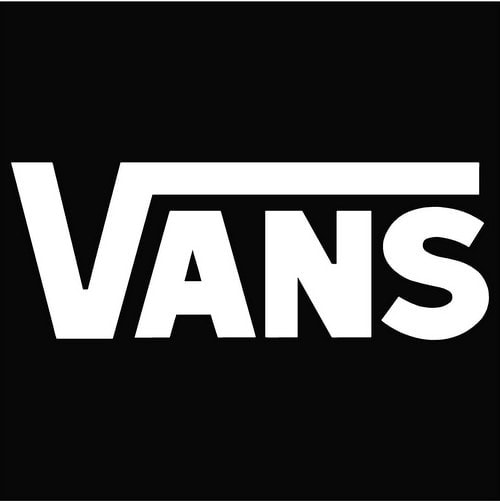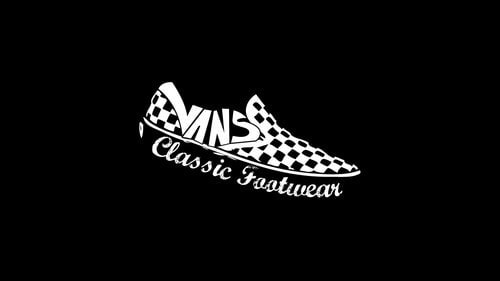The Marketing mix of Vans analyses the 4Ps of Vans, including the Product, Price, Place, and Promotions. Vans is a subsidiary of its parent company, VF Corporation. It was founded in 1966 by its co-founders Asiah Brewster, Paul Van Doren, Serge D’Elia, James Van Doren, and Gordon C Lee. Vans is an American company associated with the lifestyle and retail industry as it deals in apparel and accessories. It has created a niche as a reputable and desirable brand in the sporting community. The brand faces competition from the following.
- Element
- DC
- Timberland Llc
- Nike, Inc
- Converse Inc
About Vans
- Major products: Skateboarding shoes, apparel, and accessories
- Type: Vans is a subsidiary of VF Corporation, a large apparel company.
- Industry: Footwear and apparel
- Founded: 1966.
- Founders: Paul Van Doren and his partners.
- Headquarters: California, United States.
- Area Served: Worldwide
- Current CEO: Steve Van Doren
- Number of Employees: As of the information available, Vans had about 1,690 employees. However, this number may vary with time.
- Major Products: Footwear, clothing, outerwear, gear, and accessories, primarily targeting snowboarders and skateboarders.
Table of Contents
Vans Product Strategy
Vans is a manufacturing company that designs and makes skateboarding footwear and related apparel. It has aligned with skating since its inception and has manufactured footwear with the best grip, thickest sole, and resilient stitching; hence, the van brand has become an all-time favorite of skaters. Later, it was entwined with other sports like snowboarding and surfing to increase its product portfolio. The company sells items for men, women, and kids.
Footwear is available in colors like white, red, blue, black, checkerboard, and original classic and in different sizes to suit individual needs. The company uses synthetic, suede, vegan-friendly, canvas, leather, and textile materials in lightweight shoes with patterns like an animal, floral, color-block, checkerboard, and solid. For shoes, Vans has collaborated with Metallica, a tribe called Quest, Kyle Walker, Spitfire, Gilbert Crockett, and Chima Ferguson.
The new Product Mix of Vans in 2023 is as follows (Source).
- Footwear: This is the core product segment for Vans. They are renowned for their sturdy and stylish skate shoes. The classic slip-on, Old Skool, Authentic, Era, and Sk8-Hi are some of their most iconic designs. They also produce a variety of other shoe styles for men, women, and children, including sandals and high-tops.
- Apparel: Vans offers a range of casual wear, which includes T-shirts, hoodies, jackets, shorts, and pants. Their apparel often features bold prints and designs consistent with the brand’s skateboarding roots.
- Accessories: This includes items like backpacks, hats, socks, and sunglasses. These accessories often feature the distinctive Vans checkerboard pattern or other designs that align with the skate culture aesthetic.
- Skateboarding Gear: While not as extensive as their footwear and apparel lines, Vans does offer some skateboarding gear, including protective equipment and skateboarding accessories.
- Limited Editions and Collaborations: Vans is known for its collaborations with artists, musicians, and popular media franchises, resulting in limited edition products. These collaborations often result in unique shoe and apparel designs catering to niche markets and collectors.
- Custom Products: Vans offers a customization feature on their website where customers can design their shoes, choosing from various colors and patterns.
The product mix of Vans is characterized by a strong brand identity rooted in skateboarding and Southern California culture, appealing to a wide demographic that values both style and functionality in casual wear and footwear.
Vans Place Strategy
Vans is a global corporation that has spread its presence to several countries. It operates via its headquarters based at Costa Messa in California. The brand started its journey from its first store in Anaheim, California, and sold its footwear directly to the customers.
Since then, it has opened three hundred and fifty chain stores in Asia, Europe, and North America via one hundred and fifty partnership deals. China is its central hub in the international market, with several departmental in-store outlets in places like Shanghai and Beijing. Shanghai also has an exclusive Vans outlet. The brand has a retail outlet at Carnaby Street in London as its flagship European store.
The company has a strong distribution channel enables its products to reach customers quickly. It has its outlets, and its products are also sold via key chains and specialty stores of skates and surfing. Its official site is also one of its significant outlets, as it has helped expand business via e-commerce.
Here’s the place strategy of Vans.
- Retail Stores: Vans operates numerous branded retail stores across the globe, located in major cities and shopping districts. These stores sell their products and embody the brand’s skate culture ethos, often hubs for local skateboarding communities.
- Online Sales: Vans has a solid online presence with a user-friendly website that offers its full range of products. This strategy caters to the growing trend of e-commerce shopping, providing convenience and accessibility to customers worldwide.
- Third-Party Retailers: Vans products are widely available in department stores, shoe stores, and specialty sports retailers. This broad distribution through third-party retailers helps the brand reach a wider market beyond its retail and online channels.
- International Expansion: Vans has been expanding its market reach globally, not only in North America but also in Europe, Asia, and other regions. This international presence helps the brand tap into diverse markets and cater to consumer preferences.
- Specialty Boutiques and Collaborations: Vans often collaborates with boutique stores for exclusive releases. These limited-edition products are typically available only in select locations, creating a sense of exclusivity and appealing to niche markets and collectors.
Vans Pricing Strategy
As an established brand, Vans has targeted upper and upper-middle-class people from urban cities as its prospective customers. The company has positioned itself as a qualitative premium brand offering premium quality and the best products to satisfy its customers.
People who wear this brand of surf shoes are automatically associated with an excellent and happening image from snowboarding, surfing, and skating. Vans is equal to youth culture and has become synonymous with trendy products. It is one of its parent company’s most popular and profitable brands, with ever-growing sales figures because of a surge in international and domestic markets.
To maintain its high sales figures, Vans has adopted a reasonable pricing policy that keeps its product prices affordable and helps customers make an easy purchase. Its leading target group is either from the sports arena or youngsters. Hence, it maintains its mid-level pricing strategy. The company believes in making profits by using trendy products and selling in larger quantities. This strategy has proved successful, earning significant revenues in both national and international markets.
Vans employs a multifaceted pricing strategy that balances affordability with brand value, enabling it to maintain a strong position in the competitive footwear and apparel market. This strategy reflects a keen understanding of its diverse consumer base and market dynamics:
- Value-Based Pricing: Vans sets prices based on the perceived value of its products to consumers. Recognizing the brand’s cultural significance and loyal customer base, Vans prices its products at a point that reflects quality and brand prestige without alienating its core market of young, style-conscious consumers.
- Competitive Pricing: In a market crowded with alternatives, Vans strategically prices its products in line with competitors while ensuring superior quality and brand recognition. This approach helps maintain a competitive edge, especially in the highly contested casual footwear and skate shoe segments.
- Premium for Collaborations and Limited Editions: Vans frequently collaborates with artists, popular culture icons, and other brands, creating unique, often limited-edition products. These items are priced higher than standard offerings, leveraging exclusivity and uniqueness to justify the premium.
- Segmented Pricing: Recognizing the varied financial capabilities of its customer base, Vans employs a segmented pricing strategy. For instance, their classic product lines are more affordable, while newer or limited-edition models are at higher price points. This segmentation ensures broader market appeal across different consumer segments.
- Psychological Pricing: Vans often uses psychological pricing strategies, like pricing products just below a whole number (e.g., $99.99 instead of $100). This approach is common in retail and makes prices appear significantly lower than they are, encouraging purchase decisions.
- Dynamic Pricing for Online Sales: With a solid online presence, Vans can adjust prices on its digital platform based on demand, trends, and inventory levels, ensuring maximum profitability and market responsiveness.
Overall, Vans’ pricing strategy produced footwear that carefully maintains brand value and appeal while ensuring accessibility to a wide range of consumers. This approach reinforces the brand’s image and drives sales across different market segments.
Vans Promotion Strategy
Vans has a firm brand name in the international arena of extreme sports, and to retain it, the company participates in several events and offers various sponsorship deals. It mainly sponsors teams related to motocross, BMX, snowboarding, and surfing. It has become the primary sponsor since 1996 of the annual Vans traveling rock festival titled Warped Tour.
Vans sponsors the Duct Tape Invitational and the US Open of Surfing 2014 at Huntington Beach in California. The company opened a skate park in Orange in 1998 and later, in the year 2009, updated it with other facilities. Later, it built others at Huntington Beach in California and The Old Vic Tunnels in London. Vans has associated its brand with youth sports and works towards creating a deep-rooted and secure position in the consumer market with its promotional policies and fashionable products. It has partnered and sponsored creative artists and musicians to maintain its unique position.
The company is a fan of social media platforms and digital media and has translated seamlessly into such realms via content marketing. Its Facebook and Instagram pages have more than 15.3 million and 3.8 million likes, respectively. Content about products and sports culture is shared via its website and other social media tools. Photos and videos of charities, events, surfers, and skaters are uploaded to create positive brand awareness.
Some Recent Video ads and Print ads for Vans are:
Liked this post? Check out the complete series on Marketing Mix


Hitesh sir it will be convenient for reader if your search box shows all the search result lists when searching the item.
Great Content ! Was extremely helpful in preparing my projects !
Ryan sheckler is not a competitor of Vans, he’s a pro skateboarder and has etnies as a sponsor. Etnies is a competitor.
Same thing with Jerry Hsu.
Thank you. I have updated the content with this info. Rather removed this wrong info from the article.